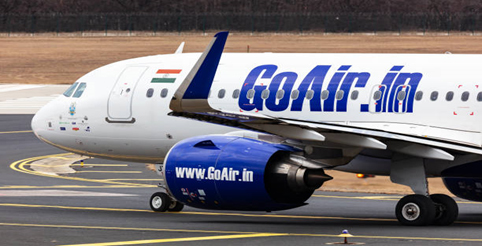A Lack of Foresight : Why Was Go First Facing a Prolonged Crisis Leading to Bankruptcy

Go First Insolvency: Revealing the Deepening Crisis
In a startling turn of events, Go Airlines (India) Ltd (Go First) has announced its decision to file for voluntary insolvency proceedings with the National Company Law Tribunal (NCLT), citing US-based engine manufacturer Pratt & Whitney (P&W) as the primary cause behind its dire situation. This move has sent shockwaves through the aviation industry, leaving employees, passengers, and stakeholders reeling from the unexpected development.
A Brewing Crisis: Signs of Trouble Ahead
While the immediate trigger for Go First’s insolvency may be attributed to issues with Pratt & Whitney engines, the airline’s descent into crisis has been a gradual process marked by visible warning signs. Delays in staff salaries, a high attrition rate within the Indian aviation sector, and repeated setbacks in the company’s plans for listing have all pointed to underlying challenges. The decision to seek insolvency resolution didn’t catch industry observers by surprise, underscoring the gravity of the situation.
Pratt & Whitney’s Role: Grounds for Disruption
Go First has squarely placed the blame on Pratt & Whitney for its predicament, alleging that the US-based engine manufacturer failed to comply with an arbitration award from the Singapore International Arbitration Centre (SIAC). This refusal to adhere to contractual obligations resulted in the grounding of nearly half of Go First’s A320neo fleet, leading to substantial financial losses amounting to billions of rupees. The airline’s reliance on Pratt & Whitney’s geared turbofan engines has proven to be a double-edged sword, with technical issues exacerbating its operational challenges.
Impact on Operations and Industry
The repercussions of Go First’s insolvency are far-reaching, extending beyond the airline itself to impact the broader aviation sector in India. With flight cancellations and insolvency proceedings underway, regulatory authorities like the Directorate General of Civil Aviation (DGCA) have intervened, issuing show-cause notices and directives to halt ticket sales. As the aviation sector strives to recover from the effects of the COVID-19 pandemic, Go First’s downfall threatens to disrupt the industry’s growth trajectory, raising concerns among lessors and stakeholders about the airline’s leased aircraft and their future.
Legal Battles and Arbitration Outcomes
The legal saga surrounding Go First’s insolvency further complicates the situation, with the airline seeking enforcement of arbitration awards against Pratt & Whitney. Despite securing a favorable ruling from the arbitrator, Go First contends that Pratt & Whitney’s failure to fulfill its obligations has pushed the airline to the brink of bankruptcy. The standoff between the two parties underscores the high stakes involved and the challenges of resolving complex contractual disputes within the aviation sector.
Conclusion: Flying to Uncertain Skies
As Go First grapples with its insolvency proceedings and the fallout from its dispute with Pratt & Whitney, the future remains uncertain for the airline and the wider aviation industry in India. The resolution of ongoing legal battles, regulatory interventions, and the ability to address underlying operational issues will be critical in determining the path forward. In the meantime, stakeholders across the aviation ecosystem brace themselves for turbulent times ahead, with hopes for a swift resolution to the crisis gripping Go First.